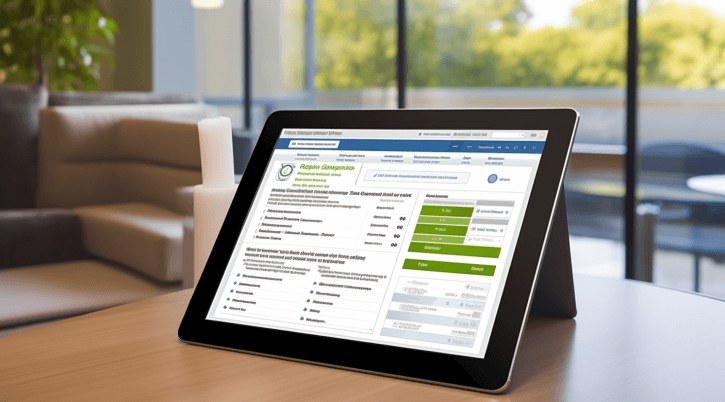The Importance of Lead Generation
In the world of business, lead generation plays a critical role in driving growth and success. But what exactly is lead generation, and why is it crucial for businesses to prioritize it?
What is Lead Generation?
Lead generation refers to the process of identifying and attracting potential customers, known as leads, who have shown interest in a company’s products or services. These leads are individuals or organizations that have the potential to become paying customers and contribute to the growth of a business.
Lead generation involves various strategies and techniques aimed at capturing the attention and contact information of potential customers. This information is typically collected through online forms, such as contact forms, subscription forms, or gated content forms, where prospects provide their details in exchange for valuable resources or information.
Why Lead Generation is Crucial for Business Success
Lead generation is a fundamental aspect of business success for several reasons:
- Increased Sales Opportunities: Lead generation generates a pipeline of potential customers, providing businesses with a pool of leads to nurture and convert into paying customers. By consistently attracting and engaging leads, businesses can increase their sales opportunities and revenue potential.
- Targeted Marketing Efforts: Lead generation allows businesses to target their marketing efforts towards individuals or organizations who have already expressed interest in their products or services. This targeted approach ensures that marketing resources are allocated effectively, resulting in higher conversion rates and a better return on investment.
- Business Growth and Expansion: By consistently generating high-quality leads, businesses can fuel their growth and expansion. New customers bring in revenue, help increase market share, and contribute to the overall success of the business.
- Building Customer Relationships: Lead generation provides an opportunity for businesses to establish and nurture relationships with potential customers. By engaging with leads through various marketing channels, businesses can build trust, credibility, and brand loyalty, ultimately resulting in long-term customer relationships.
- Data and Insights: The lead generation process provides businesses with valuable data and insights about their target audience. By analyzing the information collected from leads, businesses can refine their marketing strategies, personalize their messaging, and tailor their offerings to meet the specific needs and preferences of their target customers.
In summary, lead generation is a vital aspect of any successful business. It helps businesses attract, engage, and convert potential customers, leading to increased sales opportunities, targeted marketing efforts, business growth, customer relationship building, and valuable data insights. To learn more about lead generation techniques and best practices, check out our article on lead generation best practices.
The Power of Forms in Lead Generation
To effectively generate leads, lead generation forms play a vital role in capturing and qualifying potential customers. These forms serve as a bridge between your business and interested individuals, allowing you to collect valuable information and initiate further communication. Understanding the impact and purpose of lead generation forms is crucial for successful lead generation efforts.
Understanding Lead Generation Forms
Lead generation forms are online forms designed to collect information from individuals who are interested in your products or services. These forms typically include fields for capturing contact details such as names, email addresses, phone numbers, and company information. By providing this information voluntarily, potential leads express their interest in your offerings and give you permission to reach out to them.
Lead generation forms serve as a crucial touchpoint in the customer journey. They enable you to gather key data about your target audience, creating opportunities for personalized communication and tailored marketing efforts. By leveraging this information, you can better understand your audience’s needs and preferences, ultimately enhancing your ability to convert leads into customers.
How Forms Help Capture and Qualify Leads
Lead generation forms act as a gateway to your sales funnel, allowing you to capture and qualify leads. When individuals fill out these forms, they provide you with valuable information that helps you assess their interest and readiness to engage with your business. Here are a few ways in which lead generation forms assist in capturing and qualifying leads:
- Collecting Contact Information: Lead generation forms collect essential contact details, such as email addresses and phone numbers, enabling you to establish direct communication with potential leads.
- Segmenting and Qualifying Leads: By including specific fields in your forms, such as industry, job title, or budget, you can segment and qualify leads based on their demographics, interests, or buying intent. This information allows you to prioritize your efforts and focus on leads that are more likely to convert.
- Gauging Interest and Intent: The act of filling out a lead generation form demonstrates an individual’s interest in your offerings. The more information they provide, the higher their level of intent may be. This allows you to gauge the quality of leads and tailor your follow-up strategies accordingly.
- Building Trust and Transparency: Well-designed lead generation forms that prioritize data privacy and compliance help build trust with potential leads. Clearly communicating your data handling practices and providing options for consent can enhance the credibility of your brand.
By understanding the importance of lead generation forms and how they facilitate the capture and qualification of leads, you can optimize your forms to maximize their effectiveness. In the next section, we will delve into the key elements and considerations for designing effective lead generation forms.
Designing Effective Lead Generation Forms
To create effective lead generation forms, it is essential to focus on simplicity, user-friendliness, mobile optimization, and clear call-to-actions. These elements play a crucial role in capturing and converting leads.
Keep it Simple and User-Friendly
When designing a lead generation form, simplicity is key. A clutter-free and intuitive form layout helps users navigate and complete the form quickly. Avoid overwhelming your audience with too many fields or unnecessary questions. Only ask for the essential information that will enable you to qualify and follow up with the leads effectively.
Make sure to organize the form in a logical flow, grouping related fields together. Use clear labels and provide helpful instructions where necessary. By creating a user-friendly experience, you can encourage more visitors to engage with your form and provide their details.
Optimize for Mobile Devices
With the increasing use of mobile devices, it’s crucial to optimize lead generation forms for mobile responsiveness. Mobile-optimized forms allow users to easily access and complete the form on their smartphones or tablets. Ensure that the form elements are large enough to be tapped accurately, and the text is legible on smaller screens.
Consider using a responsive design that automatically adjusts the form layout based on the screen size. This way, you can provide a seamless experience for users across different devices, increasing the chances of form completion and lead generation.
Use Clear and Compelling Call-to-Actions
A well-crafted call-to-action (CTA) can significantly impact the success of your lead generation form. Use concise and action-oriented language that clearly communicates the purpose of the form and the value proposition for the user. For example, instead of a generic “Submit” button, consider using more compelling CTAs such as “Get Your Free Ebook” or “Request a Demo.”
Ensure that the CTA stands out visually by using contrasting colors or button styles. This makes it easier for users to locate and interact with the form. Additionally, consider incorporating urgency or scarcity elements in your CTAs to create a sense of motivation or exclusivity.
By keeping your lead generation forms simple and user-friendly, optimizing them for mobile devices, and using clear and compelling call-to-actions, you can enhance the overall effectiveness of your lead generation efforts. Remember to regularly test and optimize your forms to ensure the best possible user experience and lead conversion rates. For more information on lead generation strategies and best practices, check out our article on lead generation techniques.
Key Elements of Successful Lead Generation Forms
When it comes to lead generation, the design and functionality of your lead generation forms play a crucial role in capturing and converting potential leads. Here are some key elements to consider when creating effective lead generation forms.
Form Placement and Visibility
The placement and visibility of your lead generation form can significantly impact its performance. It’s important to strategically position your form where it is easily noticeable and accessible to your website visitors. Placing the form above the fold, where it is visible without scrolling, can increase the chances of engagement.
Consider incorporating the form within high-traffic pages or landing pages that align with the interests of your target audience. Additionally, including a clear and compelling call-to-action (CTA) near the form can prompt visitors to take the desired action. For more information on optimizing your landing pages for lead generation, check out our article on lead generation landing pages.
Form Length and Field Selection
The length and complexity of your lead generation form can impact its conversion rate. While it’s important to gather relevant information from your leads, excessively long forms can deter potential prospects from completing them. Striking the right balance is crucial.
Consider the essential information you need to collect and prioritize those fields in your form. Eliminate unnecessary fields that may increase friction and reduce completion rates. It’s advisable to use progressive profiling techniques, where you gather additional information over time through multiple form submissions.
Implementing Form Validation and Error Messaging
To ensure accurate and reliable data, implementing form validation is essential. Form validation helps users correct any errors or omissions before submitting the form. Displaying clear error messages near the problematic fields can guide users in making the necessary corrections.
Form validation can be implemented in various ways, such as checking for valid email addresses, enforcing password requirements, or validating phone numbers. By providing real-time feedback, you can improve the user experience and minimize form abandonment.
Remember to strike a balance between strict validation and user convenience. Overly strict validation rules may frustrate users, while lenient validation may result in inaccurate data. Aim for a seamless and error-free form submission process to maximize lead generation.
By considering these key elements, you can create lead generation forms that effectively capture and convert potential leads. Remember to continuously monitor and analyze the performance of your forms and make data-driven optimizations to improve your results. For more information on lead generation best practices, check out our article on lead generation best practices.
Maximizing Lead Generation Form Impact
To fully harness the potential of lead generation forms, it’s essential to maximize their impact. This can be achieved through A/B testing and optimization, integration with CRM and automation tools, and ensuring data privacy and compliance.
A/B Testing and Optimization
A/B testing is a valuable strategy for optimizing lead generation forms. By creating two versions of a form and testing them against each other, you can identify which elements or variations yield better results. Elements to test include form layout, field order, button design, and even the wording of your call-to-action.
Through A/B testing, you can gather data and insights to make data-driven decisions. This iterative process allows you to continually refine and improve your lead generation forms, increasing their effectiveness over time. Remember to track important metrics such as conversion rates, form abandonment rates, and completion time to measure the impact of your optimizations.
Integration with CRM and Automation Tools
Integrating your lead generation forms with customer relationship management (CRM) and automation tools can streamline your lead management process. When a lead submits a form, their information can be automatically captured and stored in your CRM system, enabling efficient lead tracking and follow-up. This integration facilitates seamless communication between sales and marketing teams, ensuring leads are properly nurtured.
Automation tools further enhance the effectiveness of lead generation forms. By setting up automated workflows, you can automatically send follow-up emails, trigger personalized responses, and segment leads based on their form submissions. This saves time and ensures consistent engagement with your leads, increasing the chances of conversion.
Ensuring Data Privacy and Compliance
In an era where data privacy is paramount, it’s crucial to prioritize the protection of personal information collected through lead generation forms. Ensure that your forms comply with relevant data protection regulations such as the General Data Protection Regulation (GDPR) or the California Consumer Privacy Act (CCPA).
To maintain data privacy and compliance, implement measures such as securing your data storage, obtaining explicit consent for data collection, and providing clear privacy policies. Transparency and trust are key in building strong relationships with your leads.
By incorporating these strategies for maximizing lead generation form impact, you can optimize your lead capture and conversion efforts. A/B testing and optimization allow you to fine-tune your forms for optimal performance, while integrating with CRM and automation tools streamline lead management. Lastly, prioritizing data privacy and compliance ensures a trustworthy relationship with your leads, promoting long-term success.
Remember to keep exploring various lead generation techniques and leveraging the power of cold email outreach to further enhance your lead generation efforts.



